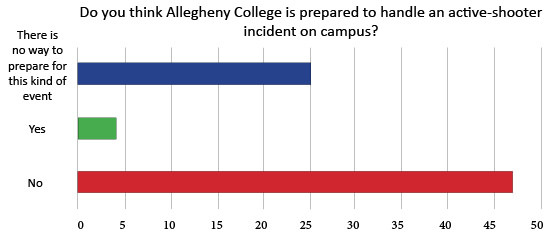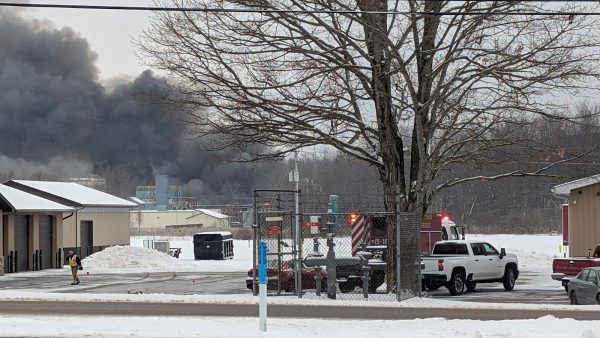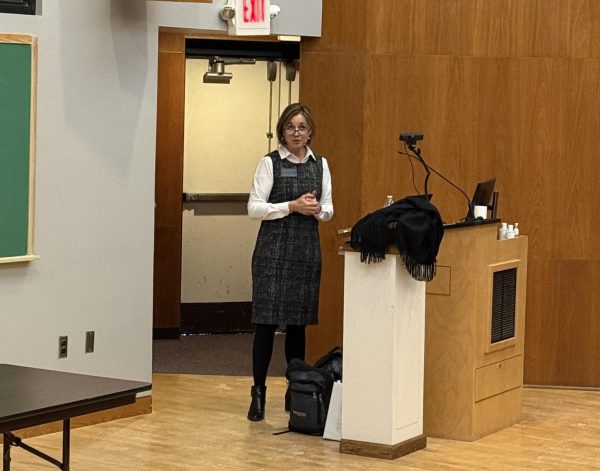US faces active-shooter epidemic
Obama: Americans have ‘become numb’ to gun violence
Since the beginning of October, there have been at least three shootings on college campuses resulting in one or more persons’ deaths.
For the United States, mass shootings, especially on school grounds, have become a ‘routine,’ as President Barack Obama said in a statement released following the Umpqua Community College shooting in Oregon on Oct. 1, 2015. The Umpqua shooting resulted in the death of 10 people, including that of the shooter.
“But as I said just a few months ago, and I said a few months before that, and I said each time we see one of these mass shootings, our thoughts and prayers are not enough,” said Obama. “It’s not enough. It does not capture the heartache and grief and anger that we should feel. And it does nothing to prevent this carnage from being inflicted someplace else in America—next week, or a couple of months from now.

The Campus released a poll on Thursday, Oct. 15, 2015 asking the Allegheny community whether or not the college is prepared to handle an active-shooter emergency on campus. It closed at 7 p.m. and received 76 responses.
“Somehow this has become routine. The reporting is routine. My response here at this podium ends up being routine. The conversation in the aftermath of it. We’ve become numb to this.”
In the past years, active-shooter incidents have become more prevalent in the U.S. From 2000 to 2013, there were 160 active-shooter incidents—averaging 11.4 per year—according to a report released by the FBI on Sept. 16, 2013. These data include incidents outside of schools and colleges/universities.
From 2013 to 2015, there have been at least 150 school shootings, averaging approximately one per week according to everytownresearch.org. These data do not include active-shooter incidents occurring outside of schools and colleges/universities.
James Mullen, president of Allegheny College, mentioned the risk of these events becoming a regular occurrence in the country.
“We have a tragedy, a national tragedy, and we all focus on that and then we go back to our routines. I think particularly at a place like Allegheny where it is somewhat understandable that we could say, ‘Well, this could never happen here,’ I think what these situations remind us is 1) it can happen anywhere, sadly and 2) instead of just going back to our routines, we should learn what we can in these moments,” said Mullen.
For Allegheny, the closest the college has come to an active-shooter incident was in April 2012, with what is now colloquially known as the Tan-on-Tan Man incident. Meadville Police were in search of a suspected armed and dangerous fugitive near Allegheny’s campus. In response, the college went into lockdown.
Jacquie Kondrot, interim dean of students said out of her more than 25 years at Allegheny, the Tan-on-Tan Man was the only incident resulting in lockdown. Both Kondrot and Jen Foxman, assistant dean of students and director of residence life, said they were pleased with how the lockdown was enacted.
“That was an OK run-through,” said Foxman. “Fortunately, nothing happened. It allowed us to kind of try out some of those different systems. We were able to figure out pretty quickly how to disperse people to different parts of campus so we had folks in all the major buildings. The communication system worked well.”
Throughout the year, Allegheny works both internally and externally to prepare for emergency situations, including hostile people on campus. The college participates in tabletop exercises and drills with the Meadville community, and it is also in contact with the Meadville Police, the Meadville Medical Center and Crawford County Office of Emergency Services.
Mullen said to prepare for an active-shooter scenario, the college needs to constantly be revisiting protocols and communication channels.
“The best that we can do at Allegheny is be prepared in every way that we can imagine for the unforeseen, and we have established protocols that we believe have us prepared,” said Mullen. “While you can never guarantee what’s going to happen, sadly, in the world. I believe we work hard every day to make sure our systems are effective.”
The main communication outlet the college has in place for contacting members of the Allegheny community is the e2Campus system. This alert system allows designated administrators to send texts and emails immediately to students, staff and faculty who have signed up for the alerts.
According to Kondrot, e2Campus is the easiest method to communicate emergencies with the Allegheny community, but only about 38 percent of the college makes use of this service. Approximately 950 people are registered with e2Campus, compared to the 2,452 students, staff and faculty attending or working at the college. That means approximately 62 percent of people on campus would not be notified in the event of an emergency. (Visit: https://www.e2campus.net/my/allegheny/ to sign up for e2Campus)
While the college lists emergency procedures on its website, there is no information posted concerning active shooters on campus. The emergencies listed are behavioral disturbances, bomb threats, chemical or radiation spill, explosion, fire, severe weather and utility failure.
“I don’t have a good answer for that,” said Kondrot as to why the website does not have procedures for an active shooter. “We do have a hostile person protocol. My hope is we’ll soon have more information on the website.”
Mullen echoed Kondrot’s opinion.
“It should be there,” he said.
In addition to improving communication channels, the college is also working towards prevention.
“[We can] make sure we’re educating people in our community to look out for one another and alert us if they’re concerned about…anyone’s behavior, if it seems indicative in any way of something that could be concerning to our community,” said Kondrot. “Of course we can’t control all of the individuals that come into our community from outside, but I think we can do a lot in terms of prevention and education as well. I’m pleased, for example, of our bystander curriculum and the work we’re doing there. I think it’s increasing awareness about looking out for one another.”
Foxman agreed with Kondrot, stating the importance of fostering a safe community.
“I was a little bit struck by President Obama standing up and saying it feels like it’s becoming routine, and that we maybe need to stand up as a community and say, ‘We shouldn’t be blind to it anymore.’ We should feel it. We should feel it’s a crisis and it’s not acceptable for it to feel routine,” said Foxman. “You never know what kind of scenario you’re going to get. So, the question of feeling prepared is a hard one because you can do everything to feel prepared, but when the situation comes you need to be ready as a community to pull together.
“For us in residence life, a big part of our job is to be aware of the community and…to build an environment where people take mutual responsibility for the community and for each other. That’s a goal I think, where we get to a point, a place like Allegheny where we’re all being aware, we’re all caring for each other.”
Despite all the protocols and ideas in place, there is no set way to prepare for an active-shooter incident on campus, considering the variability of such an event.
“I think we all want to believe it couldn’t happen here, but it’s clear that we all have to be prepared if it could because there are so many unknowns and so many variables,” said Kondrot.
Mullen agreed.
“The best I think we can do, while we pray it never happens at Allegheny, be as ready as we can if it does and hope some of the stresses in society and some of the things happening in society are addressed,” said Mullen.
Call Safety and Security at (814) 332-3357 to report any suspicious behavior/concerns or in the case of an immediate emergency call 911.
For more information on Allegheny’s emergency procedures, visit: http://sites.allegheny.edu/emergency-procedures/





